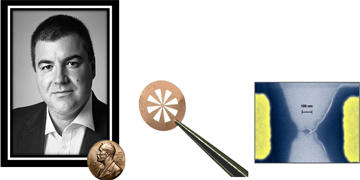
The 2-dimensional material called graphene remained undiscovered until a few years ago. In fact, there exists a whole class of such two-dimensional crystals. One of the most amazing things about graphene is that its electrons move with little scattering over huge (submicron) distances, as if they were completely insensitive to the environment only a couple of angstroms away. Moreover, electron transport in graphene is governed by the Dirac equation so that charge carriers mimic relativistic particles with zero rest mass. The very unusual electronic properties of this material and the possibility for its chemical modification make graphene a promising candidate for future electronic applications. Currently, mobilities of the order of 106cm2/V″s can be routinely achieved in mono- and bi-layer graphene samples. This has led to the discovery of novel phenomena previously unobservable in this material.
Anyone outside NIST wishing to attend must be sponsored by a NIST employee and receive a visitor badge.
For more information, contact Kum Ham at 301-975-4203.
Colloquia are videotaped and available in the NIST Research Library.
Kostya Novoselov
2010 Nobel Laureate in Physics School of Physics and Astronomy
University of Manchester

